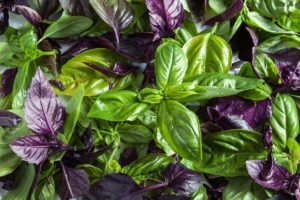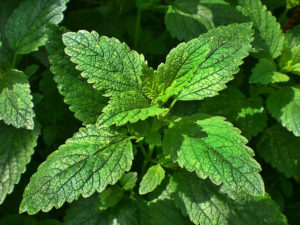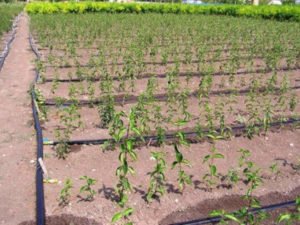In recent years, viticulture is moving further and further North of the country. And it is quite natural.
Sheltered in the winter grape Bush is not afraid of any frost, while traditional for these areas of culture regularly freeze, and even freeze. Grapes quickly comes into fruiting and quickly increases yields, which also makes it very attractive. But, alas, not all lovers of Sunny berries are successful in growing.
Why is that? Of course, this is from a lack of information, nothing more. To get in non-traditional areas for viticulture a good harvest, it is important to choose the right variety and plant bushes.
We choose grape varieties for the Northern regions
Omitting all the theoretical justification, go directly to the specific recommendations. What kind of varieties should be required on the site of beginners (and not only!) winegrowers?
Laura
Grapes ‘Laura’ showed itself perfectly in many regions. The variety is very early. Bunches weighing up to 1.5 kg or more, moderately dense, transportable. Berries are very large — 35 x 25 mm, weight 10-12 g, oval, milky-white (in the sun with a tan). Accumulates up to 23% sugar. Resistant to diseases, frost resistance to -23°C.

Codreanca
Grade ‘Codreanca’ Matures after ‘Laura’. Bunches weighing more than 1 kg, elegant. Berries weight 7-9 g, oval, dark purple. The flesh is dense, crispy, very tasty. The variety is resistant to diseases, frost resistance to -23°C. high-Yielding, deserves a place on each site.
Raisin radiant
The grapes ‘Raisin radiant’ — the variety is early maturing (115-125 days). Bunches are very large-weighing up to 1.5 kg and above, elegant. Berries are large (3-4 g), oval, pink, seedless, with excellent taste. Variety, though unstable, but deserves a place in every vineyard due to its high taste and marketability. It is considered the best achievement in the selection of Sultana.
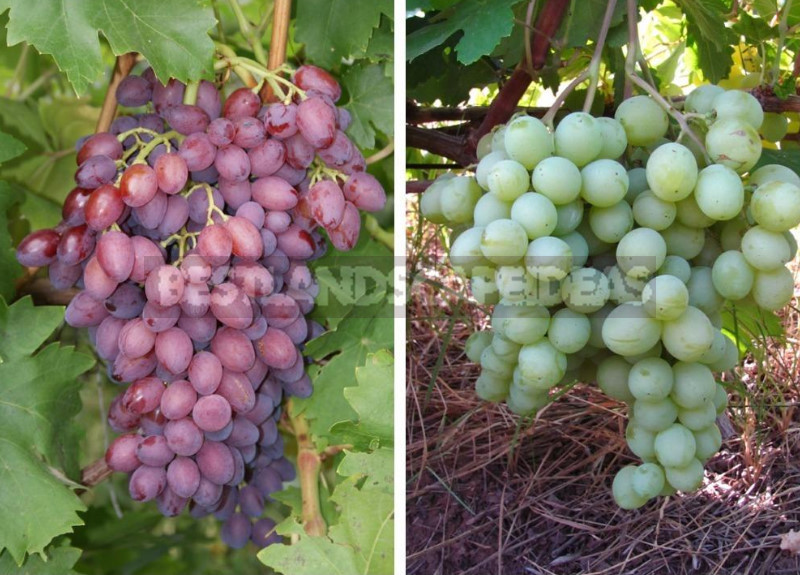
Talisman
Variety ‘Talisman’ – early-middle (127-135 days). Bunches are very large-weighing up to 2 kg, medium density. Berries are huge-weighing 12-16 g (with good care, some reach 20-25 g), white, excellent taste. Resistant to mildew, rot; frost resistance to -25°C.
With such a set, even at first and not in full, you will receive a good harvest of high-quality fruits every year.
Features of planting grapes in the Northern regions
The second very important question — how to plant vines. Blind copying of planting methods used in southern areas often leads to failure. What should be considered when planting grapes?
There are two main ways of planting grapes: in the pit (trench) and on the ridge. Which way to choose — depends on soil and climatic conditions.
- Where winters are snowless, and where groundwater is far from the surface, justified landing in the pit (trench). As a rule, these are southern regions and the entire steppe zone.
- In areas where there is enough snow in the winter, the snow cover is stable, and the groundwater is close to the surface, and where the summer is not warm enough, the best results will be planting on ridges. Such conditions are usually in the zone of deciduous and mixed forests.
Landing in the pit (trench)
It is likely that such a landing will justify itself not only in the South, but also in some regions of Northern viticulture. But in most cases, the North is more suitable landing on the ridge.
The thing is that in the Northern regions every warm day is priceless. From the bushes planted on the ridge warms up faster than the area of the roots, and the plant will start early into growth. In summer, the ridge will get more heat than a flat area, and therefore the harvest will ripen faster. This is a very important point.
Planting on the ridge
The ridge is irreplaceable and where there is an excess of moisture — especially on sites with a close arrangement of ground waters.
Between the bushes a drain pipe. Their device is not difficult:
on rubble or stones (but not lime!) set the pipe segment. From above crushed stone and part of a pipe are closed by roofing material from silting and are filled up with soil.
The optimal composition of the soil for the ridge is as follows:loam, gravel-sand mixture, humus in a ratio of 1:1: 1, with the addition of 300 g of superphosphate and 500 g of potassium sulfate per square meter of the mixture. Such a composition will make the soil structured, air-and moisture-permeable, with a reaction close to neutral. Precipitation can easily penetrate into the lower layers of the soil, and the heat of the sun will heat the ridge. But if you can not achieve the ideal composition, make a ridge of soil that you have on the site, as long as it was made ridge.
Watering and liquid feeding is best done in installed drainage pipes. This will allow the solution to immediately fall into the root zone, save moisture and fertilizer. Choosing the right variety and method of planting, you will be doomed to success!
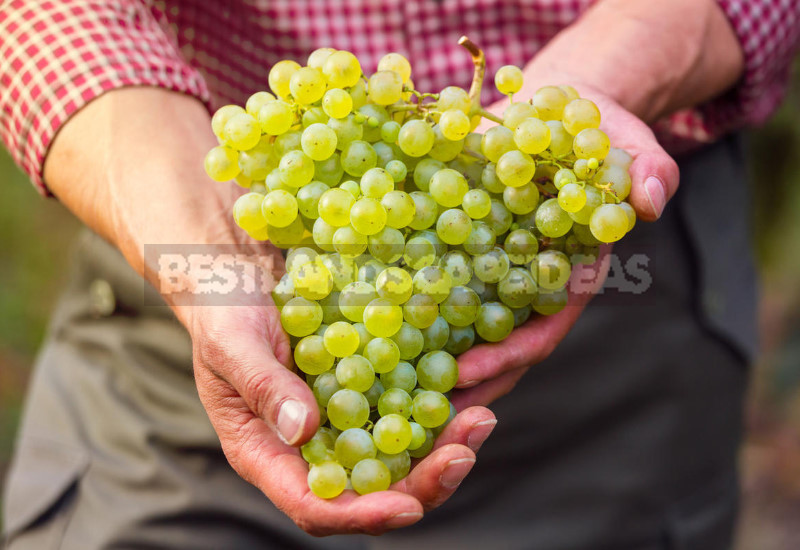
Where to place the vineyard
What else is important to consider when landing? Choosing a place for a vineyard. Grapes are called solar berry for a reason-in the shade it does not bear fruit. Therefore, the place under the vineyard pick up such that it is all day lit by the sun. Well, if it is also the southern slope.
The direction of the series do from the South to the North. Between the rows leave a distance of 2.5 – 3 m, and between the bushes in a row-at least 2.5 m.

